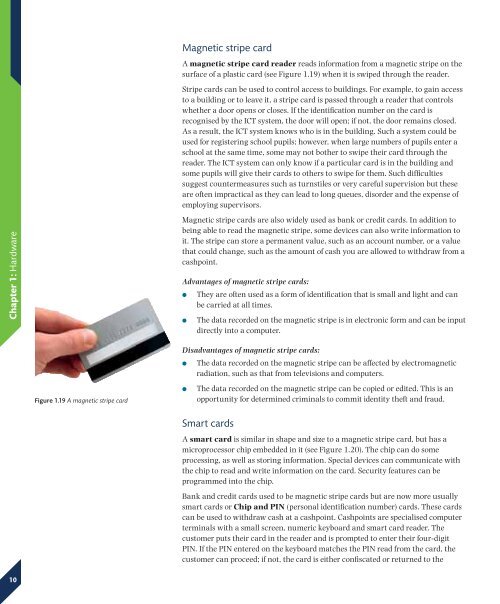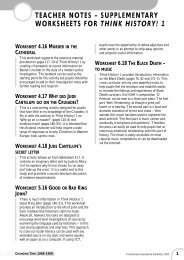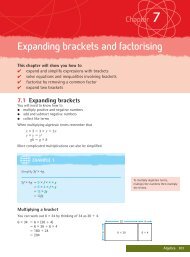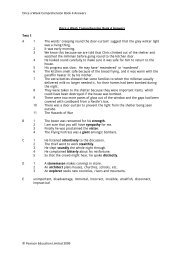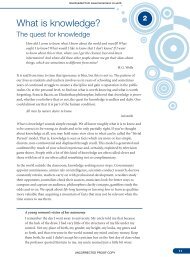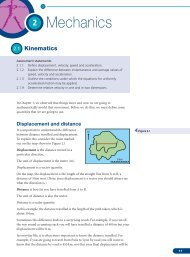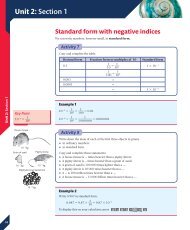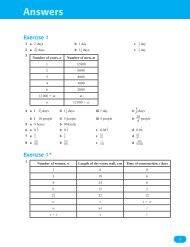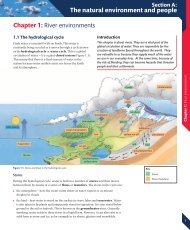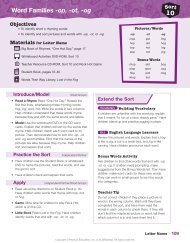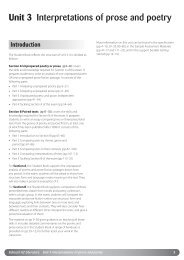Chapter 1: Hardware - Pearson Schools
Chapter 1: Hardware - Pearson Schools
Chapter 1: Hardware - Pearson Schools
Create successful ePaper yourself
Turn your PDF publications into a flip-book with our unique Google optimized e-Paper software.
<strong>Chapter</strong> 1: <strong>Hardware</strong><br />
Magnetic stripe card<br />
A magnetic stripe card reader reads information from a magnetic stripe on the<br />
surface of a plastic card (see Figure 1.19) when it is swiped through the reader.<br />
Stripe cards can be used to control access to buildings. For example, to gain access<br />
to a building or to leave it, a stripe card is passed through a reader that controls<br />
whether a door opens or closes. If the identification number on the card is<br />
recognised by the ICT system, the door will open; if not, the door remains closed.<br />
As a result, the ICT system knows who is in the building. Such a system could be<br />
used for registering school pupils; however, when large numbers of pupils enter a<br />
school at the same time, some may not bother to swipe their card through the<br />
reader. The ICT system can only know if a particular card is in the building and<br />
some pupils will give their cards to others to swipe for them. Such difficulties<br />
suggest countermeasures such as turnstiles or very careful supervision but these<br />
are often impractical as they can lead to long queues, disorder and the expense of<br />
employing supervisors.<br />
Magnetic stripe cards are also widely used as bank or credit cards. In addition to<br />
being able to read the magnetic stripe, some devices can also write information to<br />
it. The stripe can store a permanent value, such as an account number, or a value<br />
that could change, such as the amount of cash you are allowed to withdraw from a<br />
cashpoint.<br />
Advantages of magnetic stripe cards:<br />
<br />
<br />
They are often used as a form of identification that is small and light and can<br />
be carried at all times.<br />
The data recorded on the magnetic stripe is in electronic form and can be input<br />
directly into a computer.<br />
Figure 1.19 A magnetic stripe card<br />
Disadvantages of magnetic stripe cards:<br />
<br />
<br />
The data recorded on the magnetic stripe can be affected by electromagnetic<br />
radiation, such as that from televisions and computers.<br />
The data recorded on the magnetic stripe can be copied or edited. This is an<br />
opportunity for determined criminals to commit identity theft and fraud.<br />
Smart cards<br />
A smart card is similar in shape and size to a magnetic stripe card, but has a<br />
microprocessor chip embedded in it (see Figure 1.20). The chip can do some<br />
processing, as well as storing information. Special devices can communicate with<br />
the chip to read and write information on the card. Security features can be<br />
programmed into the chip.<br />
Bank and credit cards used to be magnetic stripe cards but are now more usually<br />
smart cards or Chip and PIN (personal identification number) cards. These cards<br />
can be used to withdraw cash at a cashpoint. Cashpoints are specialised computer<br />
terminals with a small screen, numeric keyboard and smart card reader. The<br />
customer puts their card in the reader and is prompted to enter their four-digit<br />
PIN. If the PIN entered on the keyboard matches the PIN read from the card, the<br />
customer can proceed; if not, the card is either confiscated or returned to the<br />
10


